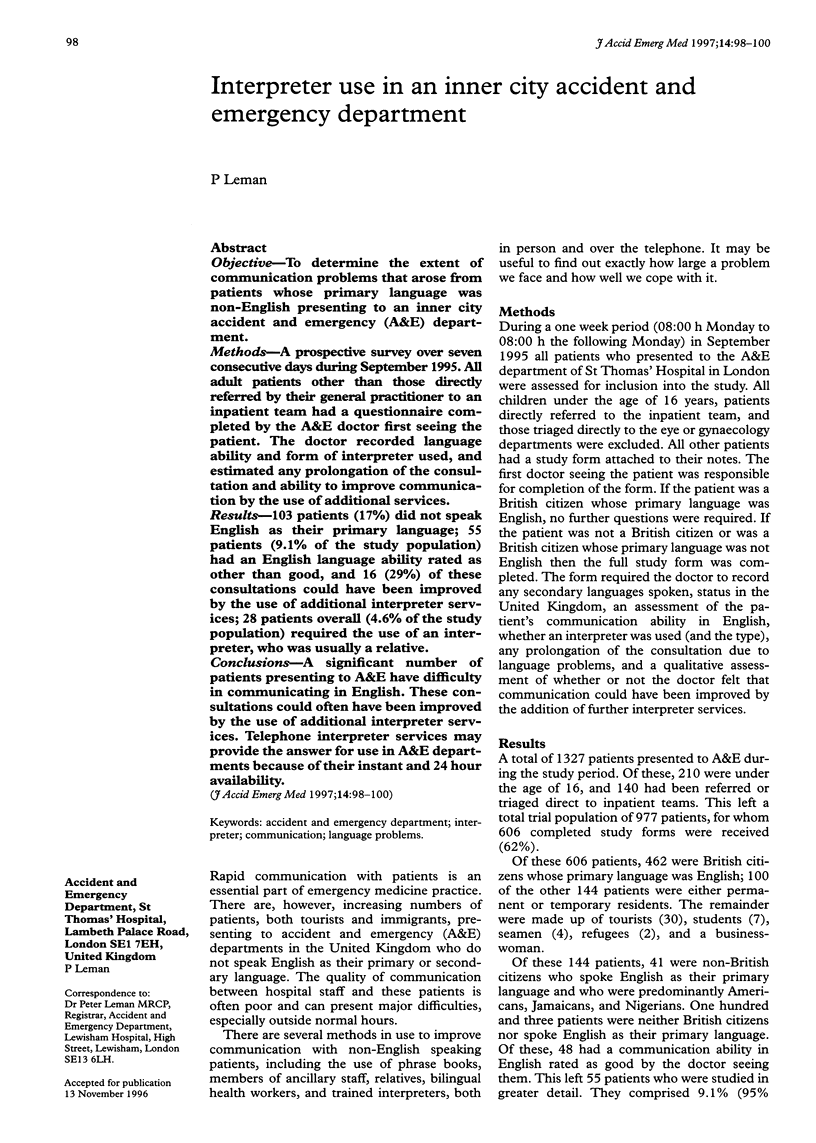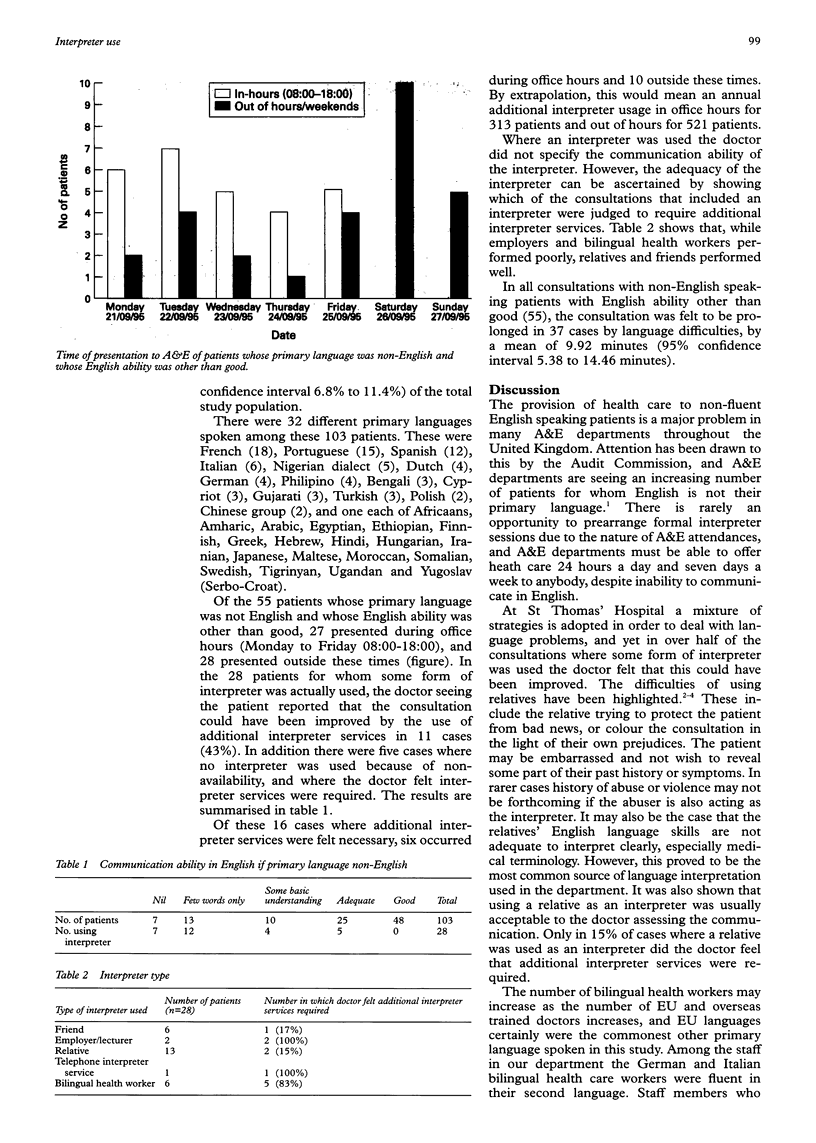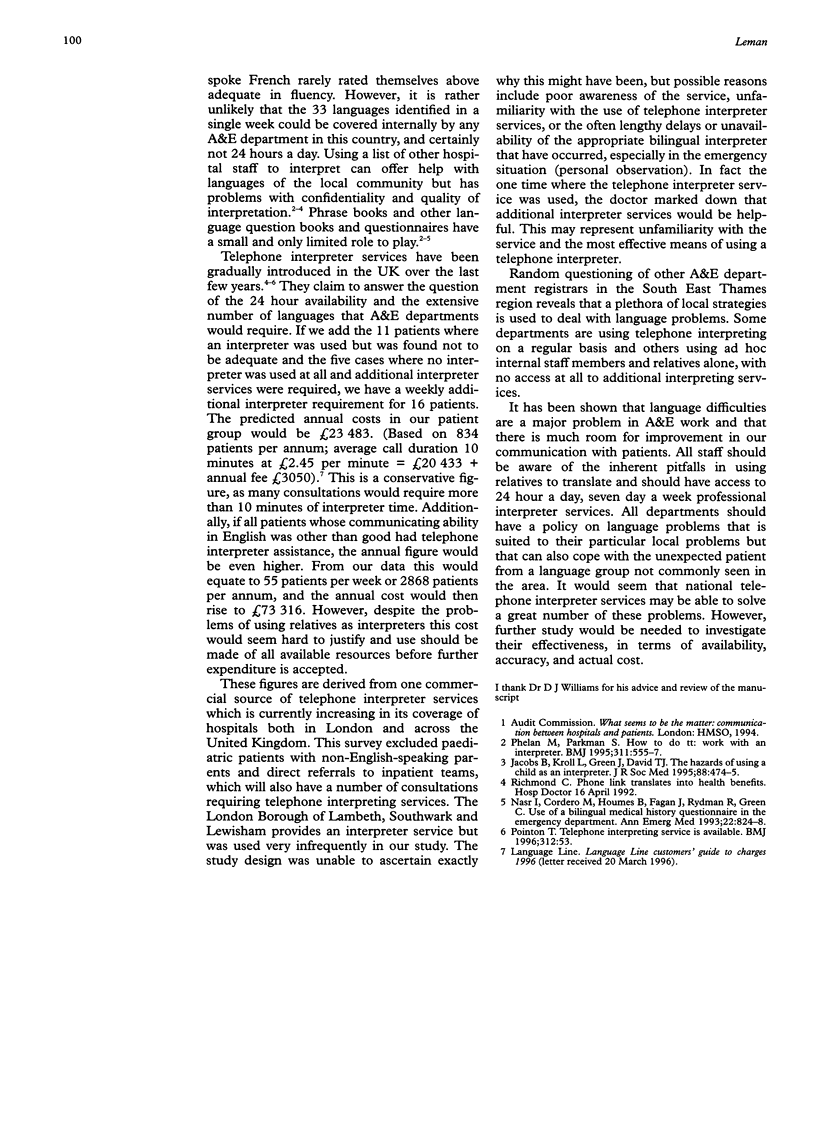Abstract
OBJECTIVE: To determine the extent of communication problems that arose from patients whose primary language was non-English presenting to an inner city accident and emergency (A&E) department. METHODS: A prospective survey over seven consecutive days during September 1995. All adult patients other than those directly referred by their general practitioner to an inpatient team had a questionnaire completed by the A&E doctor first seeing the patient. The doctor recorded language ability and form of interpreter used, and estimated any prolongation of the consultation and ability to improve communication by the use of additional services. RESULTS: 103 patients (17%) did not speak English as their primary language; 55 patients (9.1% of the study population) had an English language ability rated as other than good, and 16 (29%) of these consultations could have been improved by the use of additional interpreter services; 28 patients overall (4.6% of the study population) required the use of an interpreter, who was usually a relative. CONCLUSIONS: A significant number of patients presenting to A&E have difficulty in communicating in English. These consultations could often have been improved by the use of additional interpreter services. Telephone interpreter services may provide the answer for use in A&E departments because of their instant and 24 hour availability.
Full text
PDF


Images in this article
Selected References
These references are in PubMed. This may not be the complete list of references from this article.
- Nasr I., Cordero M., Houmes B., Fagan J., Rydman R., Green C. Use of a bilingual medical history questionnaire in the emergency department. Ann Emerg Med. 1993 May;22(5):824–828. doi: 10.1016/s0196-0644(05)80799-1. [DOI] [PubMed] [Google Scholar]
- Phelan M., Parkman S. How to work with an interpreter. BMJ. 1995 Aug 26;311(7004):555–557. doi: 10.1136/bmj.311.7004.555. [DOI] [PMC free article] [PubMed] [Google Scholar]
- Pointon T. Telephone interpreting service is available. BMJ. 1996 Jan 6;312(7022):53–53. doi: 10.1136/bmj.312.7022.53. [DOI] [PMC free article] [PubMed] [Google Scholar]



